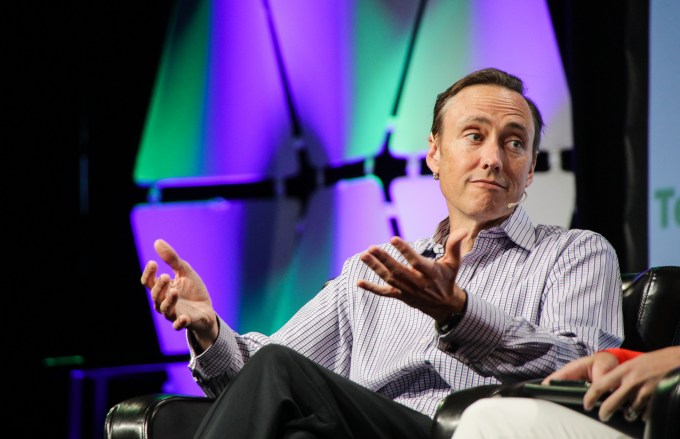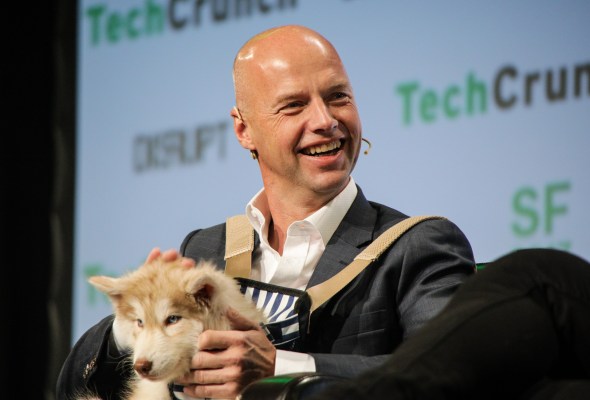Autonomous driving is often considered the brainchild of Sebastian Thrun, among a few other technologists, but Thrun is already looking to move on to the next mode of transportation — and he isn’t alone.
At TechCrunch Disrupt SF 2017, Thrun talked a lot about flying cars and how that was the future of transportation. So did GGV’s Jenny Lee, a prolific investor in China. And so did Steve Jurvetson, one of the original investors in SpaceX. The technical backbone for flying cars seems to be there already — with drones becoming ever-present and advancements in AI and self-driving cars — but the time is coming soon that flying cars will be the primary mode of transportation.
“I can’t envision a future of highways [and being] stuck in cars,” Thrun said. “I envision a [future] where you hop in a thing, go in the air, and fly in a straight line. I envision a future where Amazon delivers my food in the air in five minutes. The air is so free of stuff and is so unused compared to the ground, it has to happen in my opinion.”
And this is a pretty hard truth. Cars today are forced to move on a two-dimensional plane (ramps, clover intersections and tunnels set aside), and while self-driving cars would make it easier for cars to talk to each other and move more efficiently, adding a third dimension to travel would make a lot of sense coming next. Thrun pointed to airplane transit, which is already a “fundamentally great mass transit system.”
[gallery ids="1544049,1544056,1544048,1544047,1544053"]
Flipping back to Monday, Jurvetson said he was actually about to ride in a flying car before he “watched it flip over” before arriving to talk about some of the next steps in technology onstage. So, there’s work to be done there, but it does certainly seem that all eyes are on flying cars. And that’ll be enabled by autonomous driving, which will probably allow flying cars to figure out the most efficient paths from one point to the next without crashing into each other.
Lee this morning also said that China is closely analyzing changes in transportation. That, of course, might end up leading to flying cars.
“I do want to highlight that there’s going to be huge disruption within the transportation ecosystem in China,” Lee said. “Cars going from diesel to electric. China has about 200 million install base of car ownership. In 2016, only 1 million cars are electric. The Chinese government hopes to install 5 million parking lots that are electric… Even the Chinese OEMs are buying into flying taxis.”
Jurvetson, too, is seeing a lot of activity in the area — and he said he has looked at around 12 flying car startups in the U.S. and Europe. Jurvetson said the tech is all there thanks to electric drivetrains and autonomous flying technology, though companies are going to face a lot of regulatory hoops. That’s why he can’t give a specific time frame today, though Thrun seems to think it’s coming sooner than we think.
“They’re kind of like autonomous cars, you get a peek of the future,” Jurvetson said. “You’re like, this is the future, but you have to really experience it to believe it. It feels like an inevitability. The problem I have in making any statement of when is the regulatory environment is completely unclear… The FAA has been cautious throughout.”

Steve Jurvetson (DFJ) at TechCrunch Disrupt SF 2017
Around five years ago, flying cars might have seemed like a crazy concept. Now Udacity has a class in flying cars. Google co-founder Larry Page backed a flying car startup. Lee suggested that flying cars are, indeed, the real deal. Jurvetson may be taking joy rides in flying cars. Thrun seems to think we are inches from flying cars. And while we live in a Silicon Valley bubble that dreams big and is sometimes pretty navel-gazing, given the pace of change in artificial intelligence and autonomous driving, there may be something there.
“There’s no reason to be stuck in traffic anymore when we can fly,” Thrun said. “With a flying vehicle, I would make it from Palo Alto to San Francisco in 10 minutes and pay 50 cents in electricity costs. People say it’s a decade [away], it’s two years away honestly. There’s no technical reason it can’t be done, it’s much more a societal reason.”
